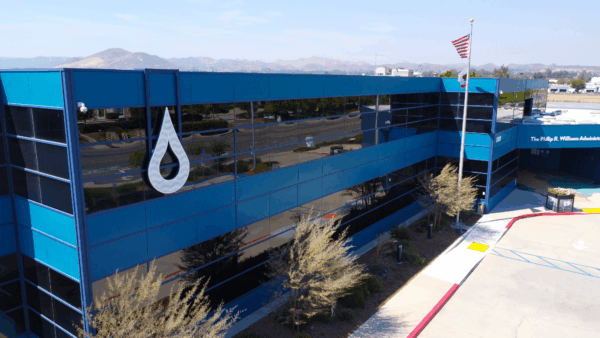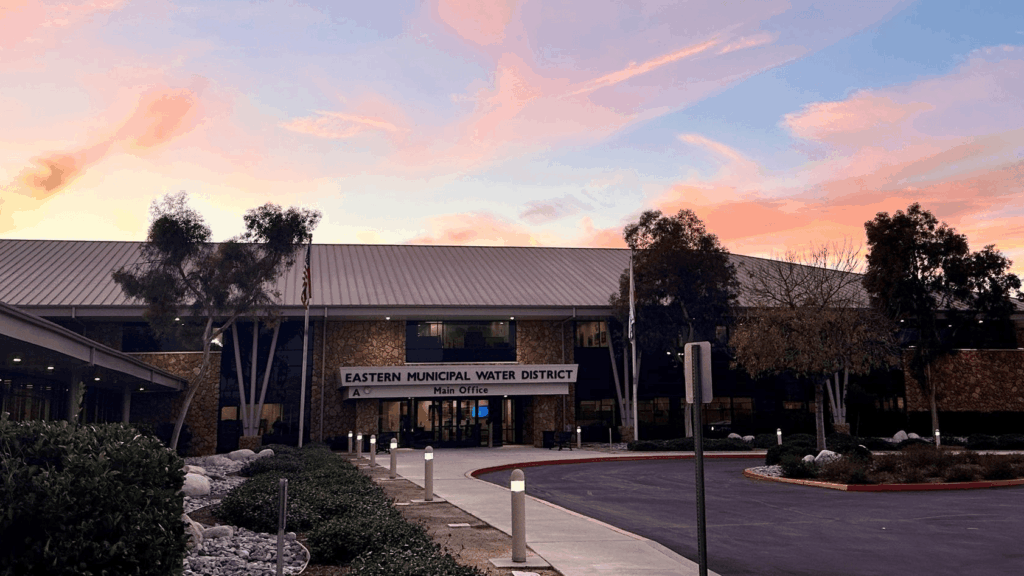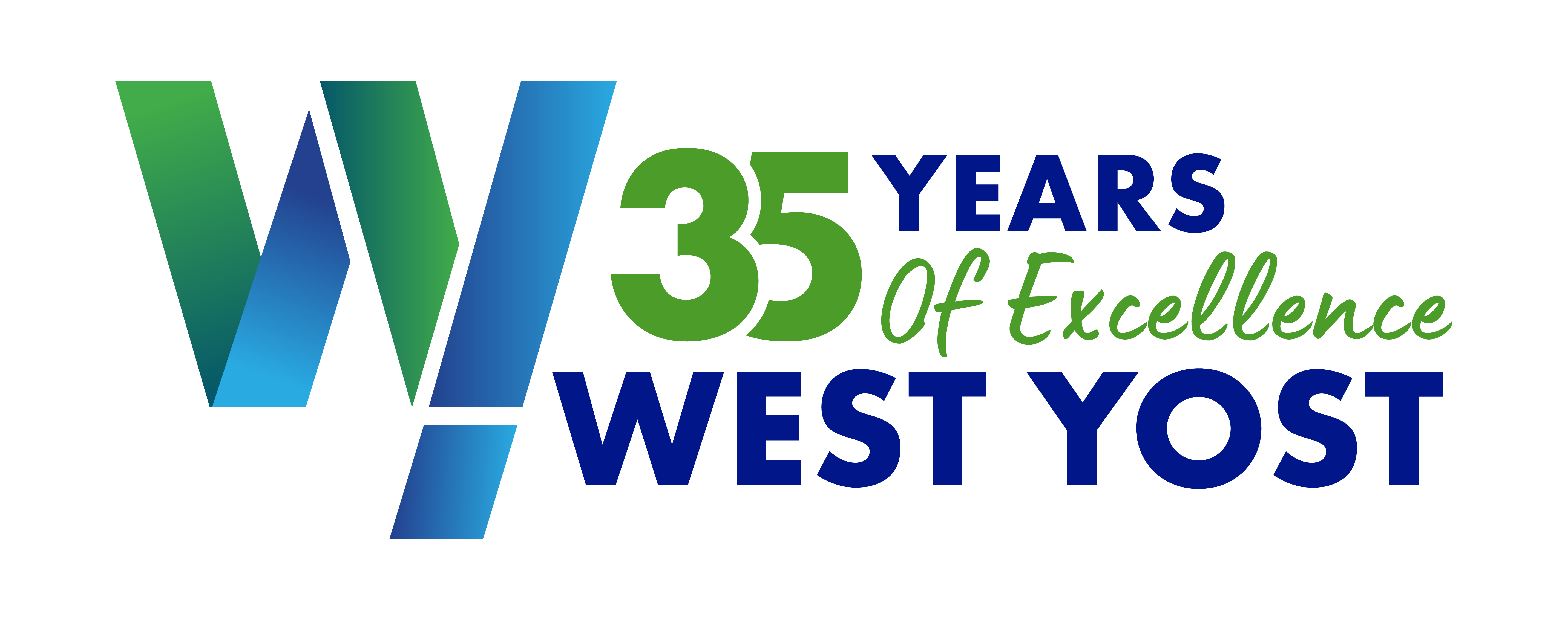Celebrating WY’s Commitment to Collaboration and Science with EMWD and EVMWD

By Samantha Adams, MESM, Carolina Sanchez, PE & Sodavy Ou, MESM
Article compiled by Hawkeye Sheene
This article contains and answers the following:
- Regional collaboration in the Santa Ana River Basin to protect water quality
- How Elsinore and Eastern MWD developed a science-based groundwater strategy
- The creation and approval of the Upper Temescal Valley Salt and Nutrient Management Plan
- How did Elsinore and Eastern MWD work together to protect groundwater quality?
- What role did West Yost play in developing the Upper Temescal Valley SNMP?
Local water supplies are a valuable resource in Southern California’s densely populated Santa Ana River Basin. Over the last 13 years, West Yost’s groundwater team has supported the partnership between two forward-thinking water districts to develop a wholistic and science-based approach to enable recycled water reuse while managing and protecting long-term groundwater quality in the Upper Temescal Valley. This regional collaboration resulted in the most comprehensive documentation of hydrologic, geologic, land use, and water use conditions ever prepared in the watershed, providing a more accurate and systemic understanding of the watershed and how to effectively protect this resource.
“The region’s dramatic population growth, coupled with the increase in the intensity and length of droughts, have made their focus on sustainability more critical than ever.”
Since their creation in 1950, both the Elsinore Valley Municipal Water District (Elsinore) and Eastern Municipal Water District (Eastern) have both been committed to their critical roles of providing water supplies to the communities in western Riverside and northern San Diego Counties while protecting the region’s vital surface and groundwater resources the communities rely on. The region’s dramatic population growth over the years, coupled with the increase in the intensity and length of droughts, have made their focus on sustainability more critical than ever.


Left: Elsinore Valley Municipal Water District; Right: Eastern Municipal Water District
In addition to providing water and wastewater services, both agencies have incorporated recycled water—a locally available and drought proof supply source—into their supply portfolios to meet increasing water demands. However, due to high salinity in several of the agencies’ potable water supply sources—such as the Colorado River—both agencies produce high salinity recycled water. The elevated salinity, measured as Total Dissolved Solids (TDS), could degrade groundwater and surface water quality through the reuse activities.
Eastern and Elsinore’s recycled water reuse activities are regulated by the Santa Ana Regional Water Quality Control Board (RWQCB), the regulatory agency responsible for protecting the quality of the region’s water resources. In 2011, the RWQCB separately instructed each District to develop and implement a plan to reduce any potential impact their recycled water supplies might have on the area’s surface and groundwater resources, already experiencing elevated TDS levels. While West Yost was able to help each District demonstrate that their recycled water activities did not independently cause a measurable increase of TDS in the downstream Santa Ana River—a water supply source to the Orange County Water District—the lack of historical data of the Upper Temescal Valley surface water/groundwater system made evaluating the potential long-term impact on the groundwater basin impossible. This data gap also meant that any costly treatments or technologies required by the RWQCB for each District to mitigate this unknown impact might not actually be effective in protecting the surface and ground water quality.
In 2013, West Yost’s groundwater team proposed the two Districts collaborate to develop a scientific methodology that would provide the missing data needed to inform a regulatory compliance solution that would support both partners’ recycled water programs while also protecting the groundwater basin and downstream resources. In October 2017, after four years of close coordination with the RWQCB in the implementation of monitoring, assessment, modeling and compliance plan development led by West Yost’s groundwater team, the partners submitted the Salt and Nutrient Management Plan (SNMP) for the Upper Temescal Valley Groundwater Management Zone to the RWQCB. The SNMP identified scientifically defensible TDS and nitrate water quality objectives for the groundwater basin and provided a long-term management plan to support those objectives. The SNMP was formally approved for incorporation into the RWQCB’s Santa Ana River Basin Plan in September 2021.
“The trust earned between the Districts, regulators, and West Yost’s groundwater team, as well as the wholistic understanding of the watershed, will continue to benefit the Districts, the populations they serve, and the larger region.”
Since January 2018, the Districts have relied upon West Yost to manage and implement the Upper Temescal Valley SNMP, including the comprehensive field monitoring program, annual compliance reporting, and periodic analysis of basin groundwater and surface water quality conditions to ensure the long-term protection of the region’s vital surface and groundwater resources. The trust earned between the Districts, regulators, and West Yost’s groundwater team, as well as the wholistic understanding of the watershed, will continue to benefit the Districts, the populations they serve, and the larger region. As we celebrate our 35th year, West Yost is proud to be a leader in developing regional solutions with clients like Eastern and Elsinore whose commitment to long-term sustainable water management made this project possible.
Congratulations and happy 75th year anniversaries to Elsinore Valley Municipal Water District and Eastern Municipal Water District. We look forward to many more years of successful collaborations.
For more information, please contact the groundwater team at West Yost.

About the Authors
Samantha Adams, MESM
Samantha’s professional experience in water resources management includes salt and nutrient management planning, groundwater management planning, Watermaster services, regulatory support and compliance reporting, and development and implementation of field monitoring programs.
Samantha has extensive experience leading multi-stakeholder groups through collaborative decision-making processes that rely on complex technical information and regulatory compliance considerations. She has managed, developed and negotiated, and/or implemented salt and nutrient management compliance plans for the Eastern MWD, Elsinore Valley MWD, Chino Basin Watermaster, Inland Empire Utilities Agency, City of Beaumont, Santa Ana Watershed Project Authority, and Coachella Valley Water District.

Carolina Sanchez, PE
Carolina’s experience in the water resources industry includes groundwater management planning, leading multi-stakeholder groups through decision making processes, recharge master planning, salt and nutrient management planning, Watermaster services, and surface water modeling. As a Senior Engineer, Carolina is involved in a variety of projects. Her tasks include administration of a Watermaster Board operating pursuant to Court-ordered water rights adjudications, analysis of groundwater level and water quality data; data management; conducting hydrologic analyses of groundwater recharge using imported, recycled, and storm waters; and modeling groundwater production trends.

Sodavy is an Environmental Scientist with experience in water resources industry. Her areas of expertise include management of field groundwater and surface water monitoring programs, analysis of water quality data, implementation of salt and nutrient management plans, analysis of salt offset requirement and compliance, utilization of visual tools to analyze the interactions between surface water and groundwater, regulatory support and compliance reporting, and database management. As a Project Scientist and Manager, Sodavy works with the regional and local governments to ensure that the science-based approaches employed in technical reports prepared for her clients comply with the strict criteria of the regional government. Sodavy is an advanced user of geographical information systems (GIS), Grapher, and HydroDaVESM.
